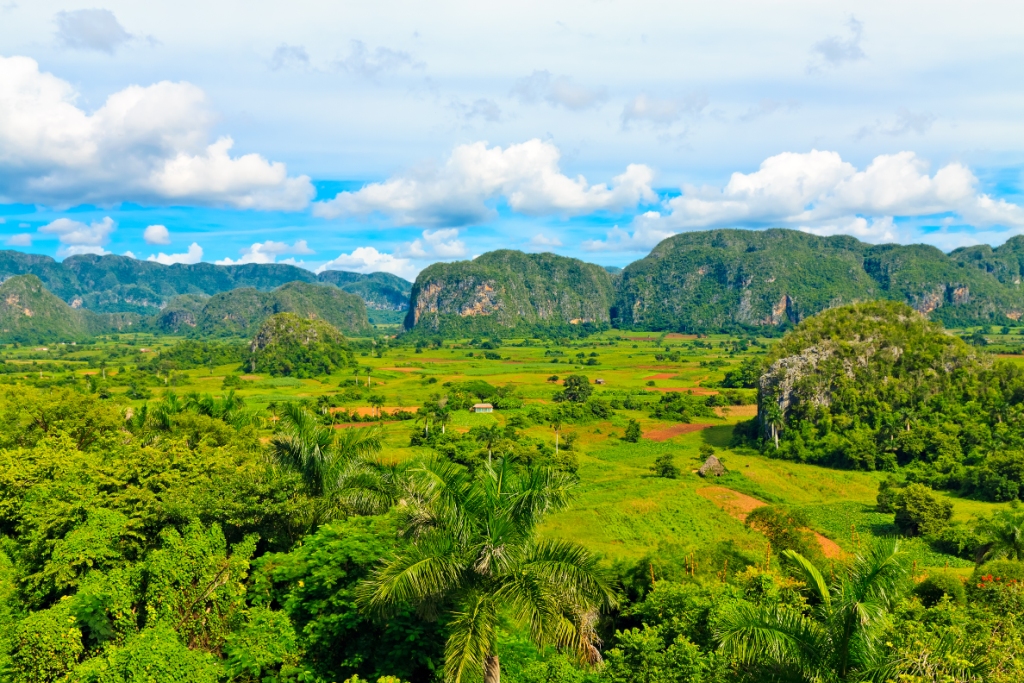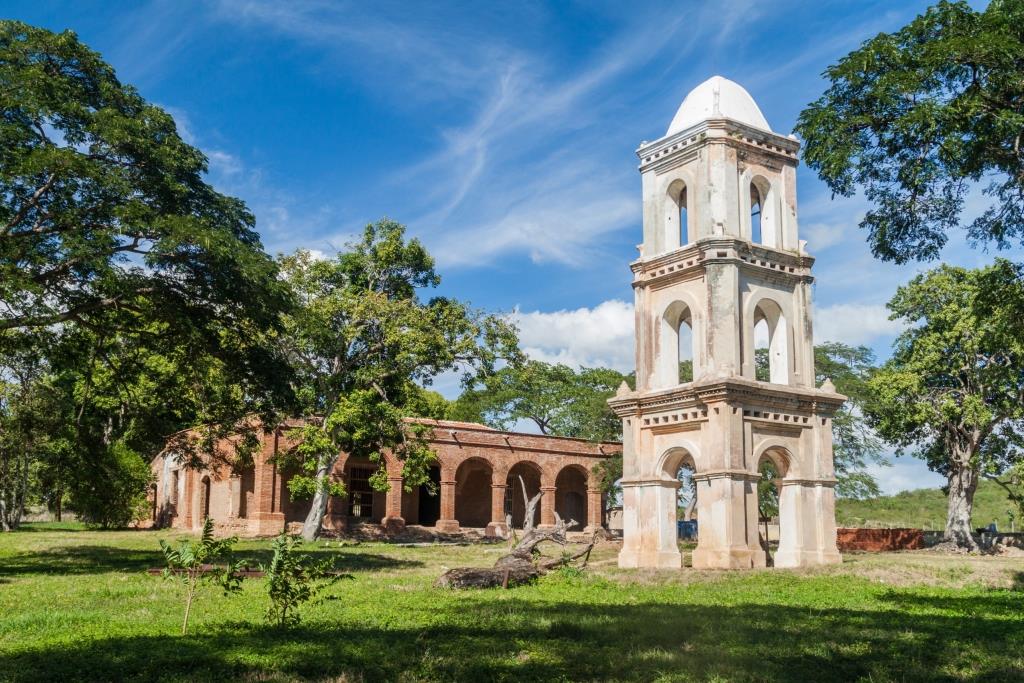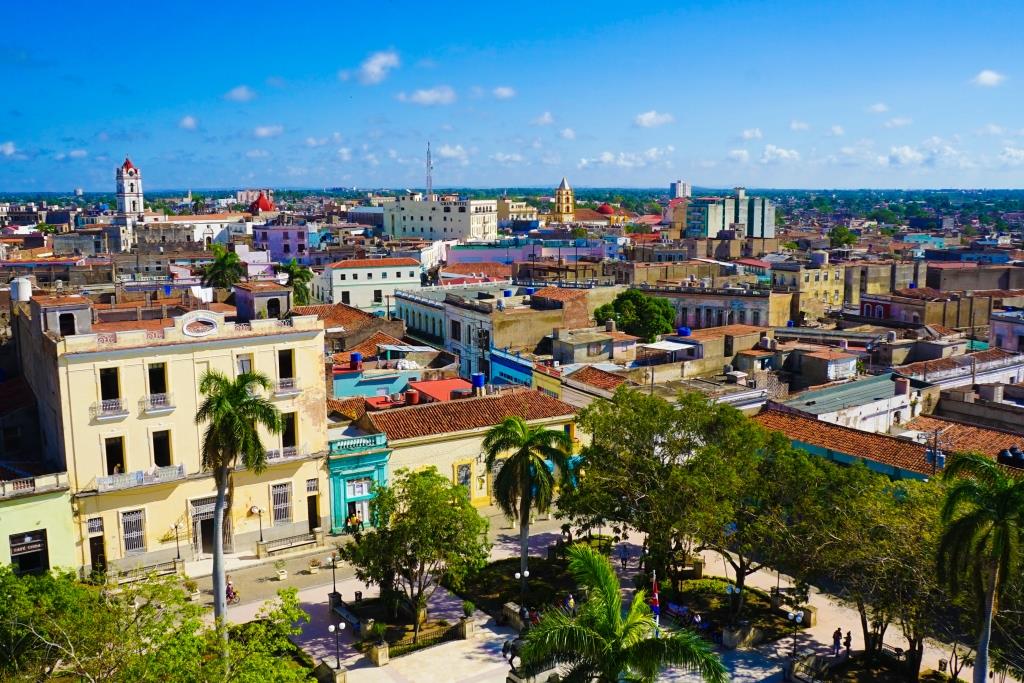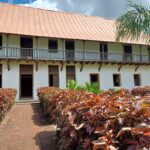UNESCO World Heritage Sites in Cuba
 Cuba’s diverse cultural heritage and unique natural wonders make it one of the most fascinating countries in the Caribbean. Its colonial cities and towns are steeped in history, from the beautiful old quarter of Havana to the colourful streets of Trinidad. The strong presence of music and art adds vibrancy to Cuba’s historic cities, and a slice of Cuban culture can be found at every corner.
Cuba’s diverse cultural heritage and unique natural wonders make it one of the most fascinating countries in the Caribbean. Its colonial cities and towns are steeped in history, from the beautiful old quarter of Havana to the colourful streets of Trinidad. The strong presence of music and art adds vibrancy to Cuba’s historic cities, and a slice of Cuban culture can be found at every corner.
Meanwhile, Cuba’s national parks present a different side to Cuba, one that is rarely explored by tourists. The country’s forests, wetlands and nature reserves boast a rich biodiversity and are home to several endemic species. Along with some of Cuba’s historic sites, a couple of these national parks have earned the status of UNESCO World Heritage Site.
If you want to experience Cuba’s two different sides, the urban and the rural, we’ve rounded up a list of places you must visit, all of which are UNESCO World Heritage Sites.
Viñales Valley

Vinales Valley, Cuba
Located in the Pinar del Río Province, Viñales Valley is one of the most picturesque places in Cuba. Thanks to the tobacco plant which thrives in this region, the valley is like one big emerald carpet. However, what makes this place truly interesting is the cluster of mogotes – steep, craggy hills scattered across the valley.
You can explore Viñales Valley by hiking or horse-riding through the paths along the tobacco fields. Visiting a tobacco farm is also a must when you’re in Viñales. Check out this post for more amazing things to do in Viñales.
Old Havana and the Fortification

Known for its colourful colonial-era buildings and beautiful plazas, old Havana (locally known as Habana Vieja), is packed with architectural gems. Havana was founded in 1519 and a complex system was built to protect the city, which for some time was the largest port in the Caribbean. Both the old city centre and the fortification are enlisted as UNESCO World Heritage Sites.
If you’re visiting Havana, make sure you spend a full day exploring the beautiful buildings in Habana Vieja. Many of the colonial-era houses have been turned into museums, like Casa de los Arabes, Casa de Africa and Casa de México Benito Juárez. You can also learn more about the city’s history by visiting some of the forts, including Castillo de la Real Fuerza and Fortaleza de San Carlos de la Cabaña. And finally wind down with a drink at one of the cafes in Plaza de Armas or Plaza Vieja.
San Pedro de la Roca Castle in Santiago de Cuba

This multi-level fortress in Santiago de Cuba was built in the 17th century to protect the city against pirate attacks. The castle sits on a rocky promontory, overlooking the harbour and offering views that stretch across the city’s coastline. It is known for its remarkable, Renaissance military architecture, which includes several terraces connected by staircases. The fort is open to the public (entrance fee is CUC$5). If you visit at sunset, you get to witness the firing of the cannon.
Trinidad and the Valley de los Ingenios

Built in the 16th century, the city of Trinidad is possibly the most colourful place in Cuba. Its winding, cobbled streets are lined with pastel-coloured houses. The lavish, colonial-era buildings along Plaza Mayor exhibit a mix of architectural influences, including Neoclassic and Moorish designs. If you want to learn more about the city’s history and beautiful architecture, pop into Museo Romantico (housed in Palacio Brunet) and Museo de Historia Municipal in Palacio Cantero.
Just outside Trinidad lies the Valle de los Ingenios, an area which used to be the hub of the country’s sugar industry in colonial times. Some of the structures and buildings in this former plantation site have remained very well-preserved. You can see still some of the milling machinery, the slave quarters, and the colonial mansion that belonged to the plantation owner. There is also a 45-metre high bell tower that signalled prayer times and marked the start and end of the work day.
If you’re visiting Trinidad, check out these not-to-miss activities.
The historic centre of Camaguey

The third largest city in Cuba, Camaguey is known for its maze-like streets, which were built in such a way as to defend the city against frequent pirate attacks. The history centre is dotted with hidden plazas and lovely churches – in fact, Camaguey is nicknamed ‘the city of Churches’. You can also admire a variety of architectural styles, including neoclassical, Art Deco and Art Nouveau. Some of the places worth visiting include the beautiful Plaza Del Carmen and Plaza San Juan de Dios, Teatro Principal and Iglesia de Nuestra Corazón de Sagrado Jesús.
Want to explore Camaguey? Check out this guide!
The historic centre of Cienfuegos

The Caribbean city of Cienfuegos is often referred to as ‘the Pearl of the South’. It is also the only place in Cuba that was founded by French settlers. The historic centre of Cienfuegos is adorned with lavish, colonial-era buildings, which include the Holy Church Pure Concepción Cathedral, the Tomás Terry Theater, and the ex-casino building that nowadays houses the Provincial Museum of Cienfuegos. The Tomas Terry Theatre is an impressive building – it has a wealth of architectural and decorative features, including ceiling frescoes and Carrara-marble carvings, and paintings inspired by Byzantine art.
Check out this guide to exploring the beautiful city of Cienfuegos.
Archaeological Landscape of the First Coffee Plantations in the South-East of Cuba
This former coffee plantation region is one of the most interesting places in Cuba. Located in the foothills of the Sierra Maestra, Cuba’s 19th-century coffee plantations is considered to be an example of cultural heritage. Besides exhibiting remarkable architectural engineering, the plantations also highlight Caribbean social history during colonial times.
You can learn more about the coffee plantations and the slave trade at Cafetal la Isabelica, a museum housed in a large mansion built by plantation owners (French immigrants from Haiti). You can also walk around the plantation grounds to see the remains of structures and tools used in coffee production, including the mills and drying platforms.
Alejandro de Humboldt National Park

Bay of Taco, Alexander Humboldt National Park
This national park in the provinces of Holguín and Guantánamo is known for its dramatic scenery and rich biodiversity. Named after a German explorer and scientist who visited Cuba in 1800, Parque Nacional Alejandro de Humboldt is home to pristine forests, beautiful lagoons and over 1,000 flowering plant species (70% of which are endemic). The park is also inhabited by endemic and endangered animal species, including the Cuban Amazon parrot and the bee hummingbird, which is the smallest bird in the world.
Desembarco del Granma National Park
Located in the southwestern tip of Cuba, this national park was the place where Fidel Castro, Che Guevara and their men landed by boat after escaping from Mexico in the 1950s. It is characterise by coastal limestone terraces, which are the best-preserved of their kind in the world, beautiful waterfalls and dramatic sea cliffs. The park is also home to several caves which were inhabited by Cuba’s original indigenous population.
If you would love to get to know the wonders of Cuba and its UNESCO world heritage sites, let us put together an itinerary for you.
Get in touch with us on info@caledoniaworldwide.com or 0131 621 7721 to discuss your trip further.






